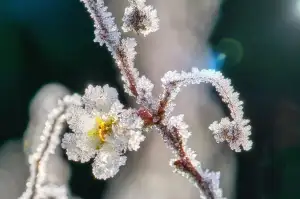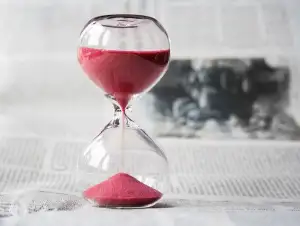Revive Your Rusty Cast Iron Skillet: A Step-by-Step Guide to Cleaning and Restoring

- Gather the necessary supplies for cleaning
- Preparing the skillet for cleaning: Removing any food residue
- Removing rust from the cast iron skillet using vinegar and water solution
- Scrubbing away remaining rust with a scrub brush or steel wool
- Rinsing and drying the skillet thoroughly
- Seasoning the cast iron skillet to prevent future rusting
- Storing the skillet properly to maintain its cleanliness and prevent rust
A cast iron skillet is a beloved kitchen tool that can last for generations if properly cared for. One essential aspect of its maintenance is keeping it clean. A clean skillet not only ensures the longevity of the pan but also enhances the flavors of your dishes. Neglecting to clean your cast iron skillet can lead to rust, food residue buildup, and even a loss in its non-stick properties. In this guide, we will take you through the step-by-step process of cleaning and restoring your rusty cast iron skillet, so you can continue to enjoy delightful meals for years to come.
Gather the necessary supplies for cleaning
To effectively clean and restore your rusty cast iron skillet, you will need a few essential supplies. First and foremost, gather some white vinegar, which is known for its rust-removing properties. You will also need water to dilute the vinegar solution. Additionally, grab a scrub brush or steel wool to help scrub away any remaining rust. Lastly, make sure you have a clean towel or paper towels for drying the skillet thoroughly after cleaning. With these supplies in hand, you'll be ready to tackle the task of reviving your beloved cast iron skillet.
Preparing the skillet for cleaning: Removing any food residue
Before you can start cleaning your rusty cast iron skillet, it's important to prepare it by removing any food residue. Begin by scraping off any large chunks of leftover food using a spatula or a stiff brush. Then, fill the skillet with warm water and let it soak for about 10-15 minutes to loosen any stubborn residue. Gently scrub the surface with a soft sponge or nylon brush to remove any remaining food particles. Rinse the skillet thoroughly with warm water and pat dry with a clean towel. Now your skillet is ready for the next step in the restoration process.
Removing rust from the cast iron skillet using vinegar and water solution
To remove rust from your cast iron skillet, you can create a simple vinegar and water solution. Start by mixing equal parts of white vinegar and water in a bowl or container large enough to submerge the skillet. Place the rusty skillet into the solution and let it soak for at least one hour, or overnight for more stubborn rust. The acidity of the vinegar will help dissolve the rust, making it easier to remove. After soaking, use a scrub brush or steel wool to scrub away any remaining rust. Rinse the skillet thoroughly with water to remove any vinegar residue before moving on to the next step.
Scrubbing away remaining rust with a scrub brush or steel wool
After soaking the cast iron skillet in the vinegar and water solution, it's time to scrub away any remaining rust. Use a scrub brush or steel wool to gently scrub the surface of the skillet. Be sure to pay extra attention to areas with stubborn rust spots. Apply some pressure while scrubbing, but be careful not to damage the seasoning layer or scratch the skillet. Continue scrubbing until all traces of rust have been removed and the skillet feels smooth to the touch.
Rinsing and drying the skillet thoroughly
After scrubbing away the remaining rust from your cast iron skillet, it's important to rinse it thoroughly to remove any leftover residue. Start by running warm water over the skillet, making sure to rinse off all the vinegar and rust particles. Use your hands or a soft cloth to wipe away any remaining debris.
Once you've rinsed off the skillet, it's crucial to dry it completely. Leaving any moisture on the surface can lead to future rusting. To dry, use a clean towel or paper towels and gently pat the skillet until it is completely dry. Make sure to pay attention to all the nooks and crannies, ensuring that every part of the skillet is free from moisture.
If necessary, you can also place the skillet on low heat on your stovetop for a few minutes to ensure that any residual moisture evaporates completely. Just be careful not to leave it unattended or on high heat as this can damage the seasoning.
Remember, proper drying is essential in maintaining a clean and rust-free cast iron skillet. By taking these steps, you'll be one step closer to enjoying delicious meals cooked in your revitalized kitchen treasure.
Seasoning the cast iron skillet to prevent future rusting
To prevent future rusting and maintain the longevity of your cast iron skillet, it is crucial to season it properly. Seasoning creates a protective layer on the surface of the skillet, preventing moisture from coming into direct contact with the iron. To season your skillet, start by applying a thin layer of vegetable oil or melted shortening all over its surface, including the handle. Make sure to coat both the inside and outside of the skillet evenly. Place the skillet upside down in an oven preheated to 350°F (175°C) for about an hour. This process allows the oil to polymerize and form a hard, non-stick coating. Once done, remove the skillet from the oven and let it cool completely before using or storing it. Remember to repeat this seasoning process periodically to maintain a well-seasoned and rust-free cast iron skillet that will enhance your cooking experience.
Storing the skillet properly to maintain its cleanliness and prevent rust
Storing your cast iron skillet properly is crucial to maintain its cleanliness and prevent rust. After cleaning and drying the skillet, make sure it is completely cool before storing. Avoid stacking other cookware on top of it, as this can cause scratches and damage the seasoning. To prevent moisture from accumulating, place a paper towel or cloth inside the skillet before storing. Store it in a dry place with good ventilation to prevent any moisture buildup. By following these simple steps, you can ensure that your cast iron skillet remains clean and rust-free for many delicious meals to come.
In conclusion, by following these simple steps, you can revive your rusty cast iron skillet and enjoy the benefits of a clean and rust-free cooking surface. With proper maintenance and care, your skillet will continue to provide you with delicious meals for years to come. So go ahead and start cooking up a storm with your newly restored cast iron skillet!
Published: 12. 01. 2024
Category: Home



